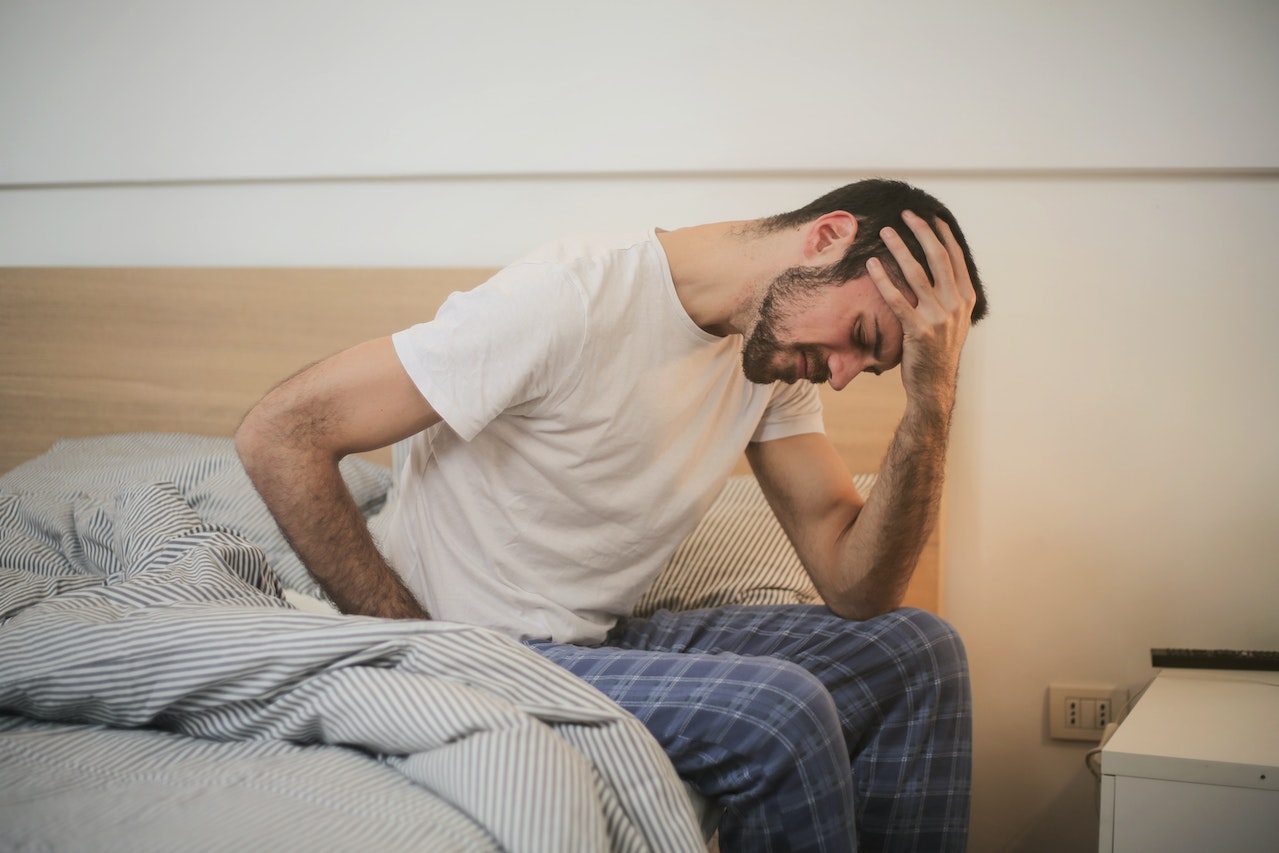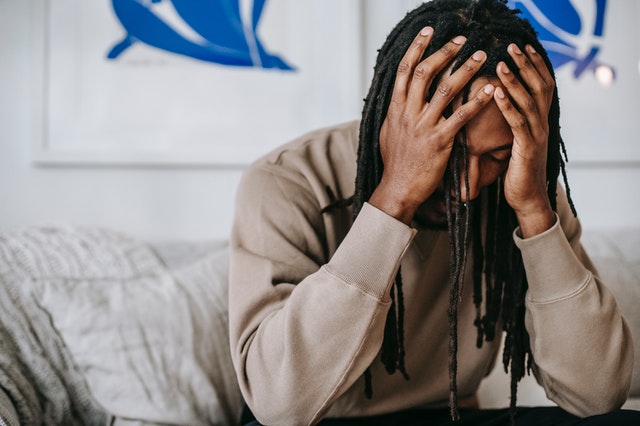If you’ve ever woken up with lower back pain in the morning or been kept awake all night by dull, aching pain, you’re not alone.
Lower back pain is common – eight out of ten people in the United States will experience it at some point in their lifetime.
Moreover, there is a high association between sleep problems and back pain.
Studies reveal that lower back pain leads to insomnia and sleep disturbances, while lack of sleep also causes increased pain.
Lower Back Pain = Insomnia (And Vice Versa)
A 2022 study addressed the relationship between lower back pain and sleep disturbances.
Researchers studied participants with sleep disturbances such as insomnia, short and long sleep duration, and daytime sleepiness.
Then, they used a statistical analysis to determine the link between those sleep disturbances and lower back pain.

Results concluded that there is a bidirectional relationship linking insomnia and lower back pain. Therefore, insomnia has the potential to cause lower back pain, and vice versa.
That said, researchers also found that a genetic predisposition to lower back pain may enhance the risk of daytime sleepiness.
When you suffer from lower back pain, it makes sense that the dull ache is all you can think about when you lay down to go to sleep.
Falling and Staying Asleep: It’s a Pain!
Waking up with lower back pain in the morning leads to waking up on the wrong side of the bed, so to speak.
Being kept awake during the night by lower back pain is even worse.
Falling asleep with back pain is tricky. We’re often left with nothing else to focus on but our pain in the silence and darkness of the night.
In fact, the lack of distractions may actually amplify your back pain.
Distracting yourself from your pain with white noise, reading, or some other low-engagement activity may help ward off insomnia.
Aside from difficulty falling asleep, back pain can make it challenging to stay asleep all night.

Many chronic pain patients say they find themselves frequently waking up throughout the night rather than sleeping straight through to morning.
Research suggests that some individuals with chronic pain may experience “microarousals” that shift their sleep state into a lighter phase, causing them to wake up.
Therefore, chronic pain disrupts sleep quality and causes sleep debt to build over time.
Over time, these non-restorative sleep patterns lead to fatigue, lowered energy, mental health issues, and even worsened pain.
As if that wasn’t bad enough, certain medications for back pain are proven to interfere negatively with sleep.
Understanding the best sleeping positions for lower back pain (and the worst) is key to reducing overnight pain that may prevent you from falling and staying asleep.
Best Sleeping Positions for Lower Back Pain
Waking up with a tingling arm, aching neck, or lower back pain in the morning is never fun.
Sleeping in the wrong position increases your chances of overnight and morning pain. The key to preventing this pain? Proper alignment.
Keeping the spine in a neutral position overnight reduces strain on your neck and back while you rest.

Therefore, one of the worst sleeping positions for lower back pain is your stomach.
Sleeping on your stomach puts large amounts of pressure on your spine and the muscles and joints within it because it flattens its natural curvature.
Moreover, it forces you to turn your neck, worsening neck and back pain.
If sleeping on your stomach is the worst sleeping position for lower back pain, what’s the best?
Sleeping flat on your back helps to keep the spine properly aligned, especially if you place one pillow underneath your head and a second pillow underneath your knees.
That said, some people find it hard to sleep on their back – and it may lead to sleep paralysis.
Lying on your side in the fetal position with a pillow between the legs provides an alternative sleeping position for lower back pain relief if you find it difficult to sleep on your back.
This position keeps the spine aligned while opening the space between your vertebrae. This eases tension on your discs and prevents the spine from curving in the wrong direction.
Whether you choose to sleep on your back or your side, try out some cold therapy (like an ice pack) for at least 15 to 20 minutes before you hop into bed.
Believe it or not, aside from managing the position of your body, managing the position of your mouth during sleep can also help to reduce lower back pain in the morning.
Breathe Your Way Into Better Sleep
How are you breathing right now? If it’s in and out of your mouth, you’re not breathing efficiently.
Mouth breathing leads to overbreathing, poor oxygenation, and places the body in an unnecessary state of fight or flight.
Nasal breathing, on the other hand, leads to proper oxygen exchange. The nose produces nasal nitric oxide, a vasodilator known to calm the nervous system.
Nasal breathing helps the body shift from a stressed state of sympathetic activation to a calm state of parasympathetic activation.
In other words, nasal breathing activates our “rest and digest” response, which may help to reduce pain across the body.
@somnifix Dr. John Flutter & Dr. Mike Mew discuss mouth breathing, airway health, & tongue posture! 😛 #mewing #mouthtape #biohack #learntok #healthyliving ♬ Makeba - Jain
Furthermore, when we nasal breathe during sleep, open-mouth snoring becomes virtually impossible. With reduced snoring, improved sleep quality follows.
As sleep quality improves, insomnia and sleep deprivation decline, reducing chronic pain. That means less of a risk of lower back pain in the morning!
But how do you ensure you’re nasal breathing if you’re asleep? Mouth tape provides a proper lip seal that prevents mouth breathing.
Because the mouth remains sealed while mouth taping, airway tissues can’t fall backward and vibrate together, putting an end to snoring for good.
Most tapes contain harmful chemicals known to irritate the skin.
SomniFix was created for all skin types. Our gel-like adhesive leads to a comfortable, rash-free fit. Our patented central breathing vent ensures that you’ll easily acclimate to the sensation of overnight mouth taping.
Shift out of fight or flight and into a state of rest and relaxation with the help of SomniFix night after night. Your sleep quality depends on it!




